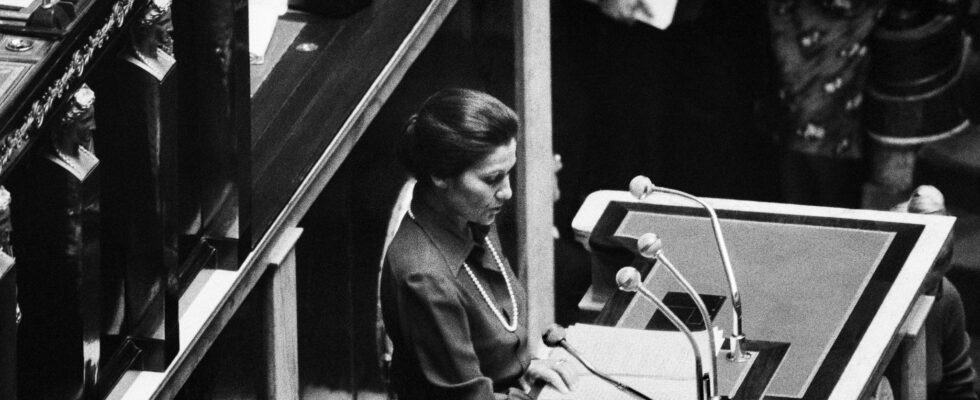The archives speak of a time that those under 50 cannot know. Those of the Council of Ministers lift the veil behind the scenes of the decriminalization of abortion in France. It is Wednesday November 13, 1974 and Simone Veil is standing almost at the end of the table, between Vincent Ansquer, Minister of Commerce, and René Haby, stationed at National Education, according to the plan provided in the file of the debates, recently declassified. after half a century of secrecy. With Françoise Giroud, seated on the same side of the oval table, that of Jacques Chirac, the Prime Minister, but on the opposite side, the only two women in the circle are located diagonally from President Giscard d’Estaing.
“The solution submitted to the Council strives to confront with lucidity and humanity the very painful problem of women whose situation of distress prevents them from carrying their pregnancies to term,” declares Simone Veil, who assures that her bill “dismisses on the whole the pretenses and the trompe l’oeil constructions”. In the secrecy of this Élysée meeting, the Minister of Health particularly insists on the “tactical” aspects of her political choices. She would like to avoid the law being passed only thanks to the left, or even “on condition that the communists do not take refuge in abstention”. Thus, the decriminalization of abortion for only five years “meets tactical objectives of presentation”, warns Simone Veil.
Twenty-five hours of grueling debates
A note from the general assembly of the Council of State dated November 12, 1974 gives an overview of the pronatalist ideology at work at the time. The magistrates “underline the seriousness of the decision requested from the public authorities at a time when the French birth rate is showing a sudden decline”. They advise authorizing abortion only on condition that a “significant effort to educate public opinion” about contraception and alternatives to abortion is carried out.
Furthermore, Simone Veil intends to prevent her text from being emptied of its meaning, which would be the case if the authorization to abort during the first ten weeks of pregnancy was subject to the approval of a doctor. The point that gives rise to the most reflection is that of reimbursement by Social Security. At the end of an arbitration by Giscard and Chirac in a “restricted council”, any support was ruled out, details Michel Lagrave, social advisor to the Prime Minister, in a note dated November 12, 1974. To the regret of Simone Veil, but also from the senior civil servant. “This provision is harsh, because it risks dissuading women belonging to the middle classes from choosing the regular route to have an abortion,” regrets Lagrave. Alas!, we must avoid anything that could dissuade the right from voting for the text.
At the end of twenty-five hours of grueling debates in the National Assembly, the project was adopted on November 29, 1974, by 277 votes against 192. The 177 left-wing deputies voted in favor, as did 93 right-wing and from the center, but 188 of them voted against. The text was promulgated on January 17, 1975. It was not until the Roudy law of December 31, 1982 that abortion was reimbursed by Social Security.
.
